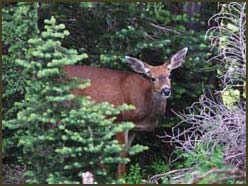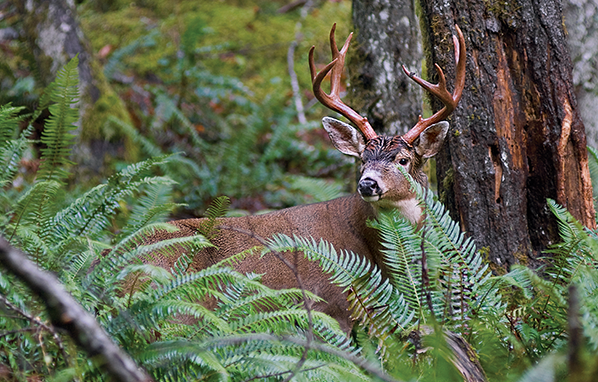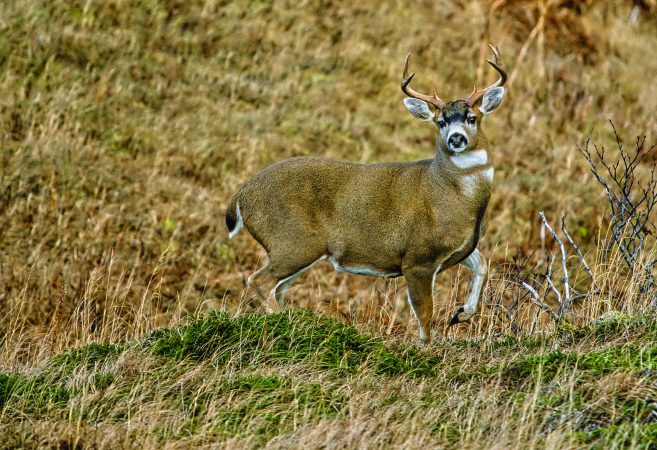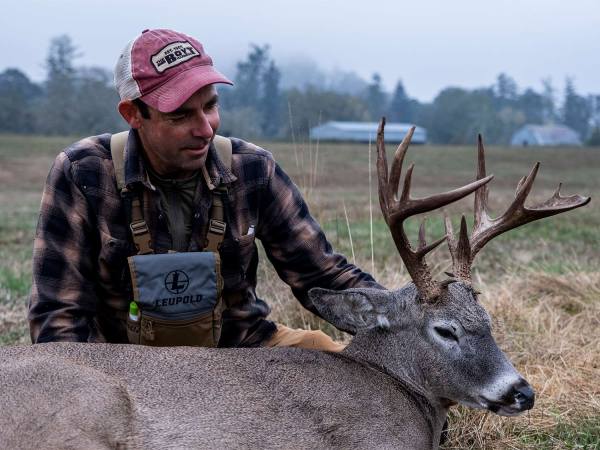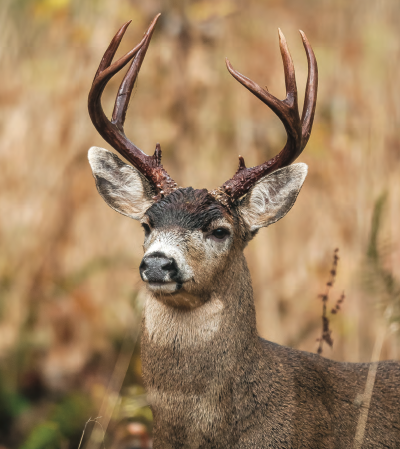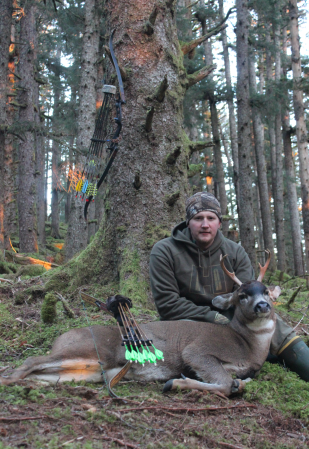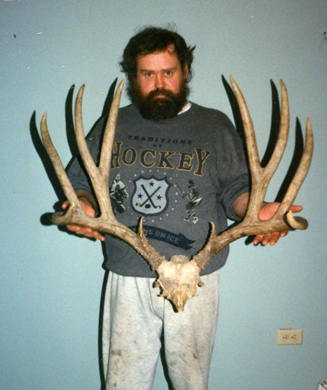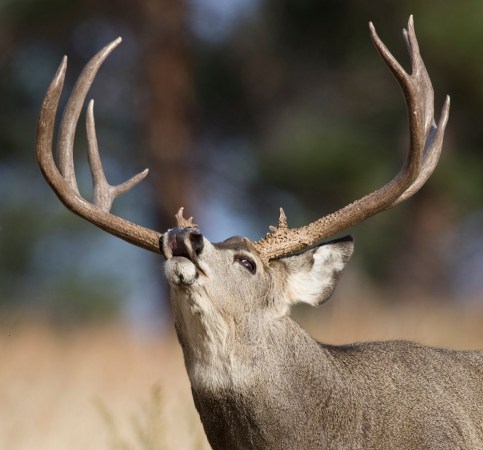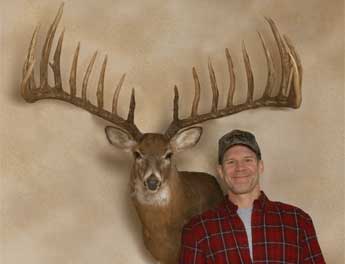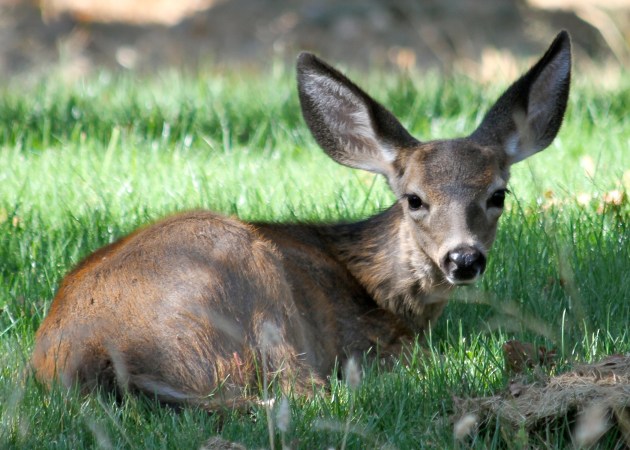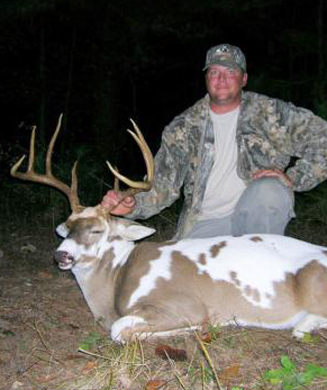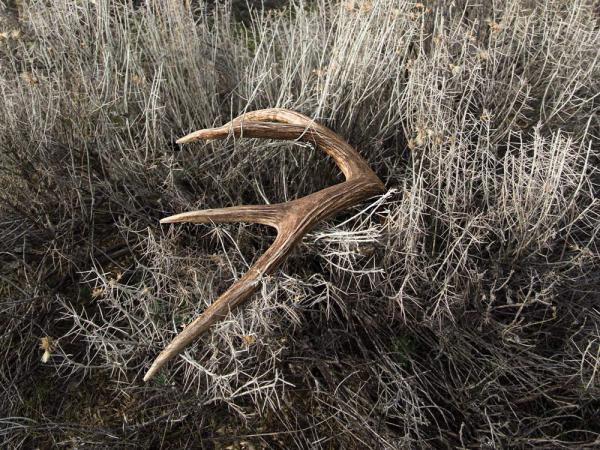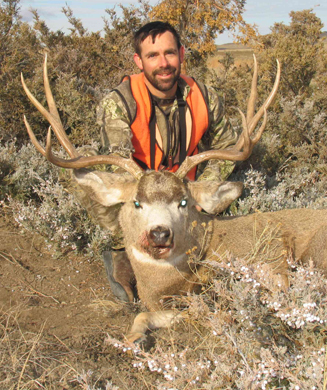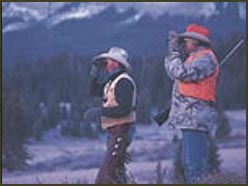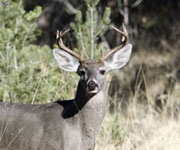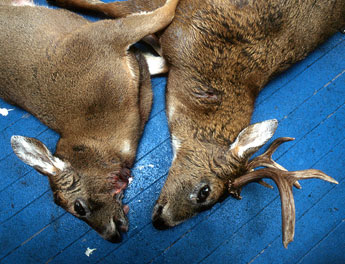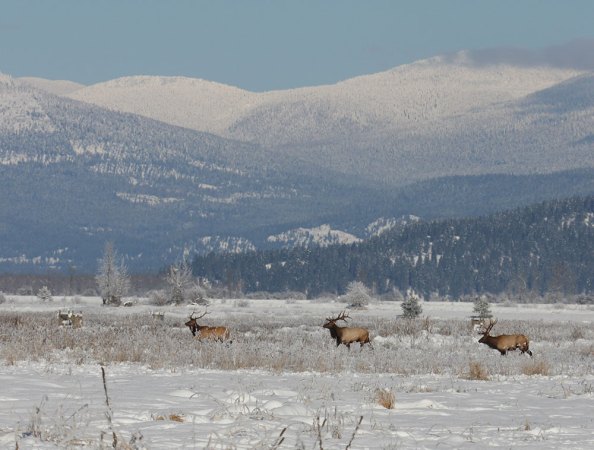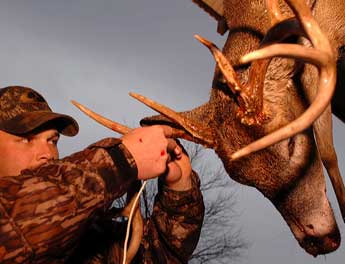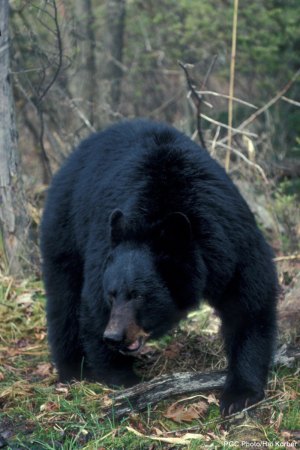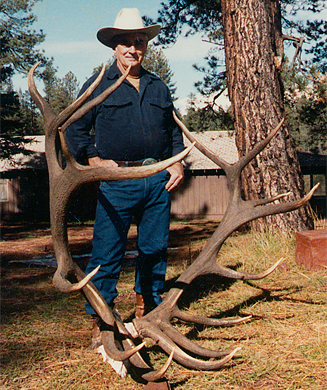Having seriously hunted blacktail deer all my adult life, I know full well why they’re referred to, often reverently, as the “Pacific Ghost.” Their natural range extends from central California to Alaska, and these secretive deer can spend their entire lives moving unseen and unheard through the thick brush, old-growth timber and thorny tangles of the Pacific Coast rain forests. Taking a trophy-class blacktail buck requires as much skill, patience and hard work as does any North American deer, bar none.
There are two subspecies of blacktails, the Sitka blacktail (Odocoileus hemionus sitkensis) of the Alaskan and British Columbia coast, and the more common Columbia blacktail (Odocoileus hemionus columbianus) occurring from central California north through coastal British Columbia. Though less plentiful than mule deer, muleys evolved from a cross between blacktails and primitive whitetail deer some 2 million years ago, according to Dr. Valerius Geist, one of the world’s foremost experts on the history of deer and the author of Mule Deer Country. Today Columbia blacktails interbreed with mule deer wherever their ranges overlap, creating several hybrid mule deer subspecies.
Blacktails behave more like whitetails than muleys, a function both of the thick cover they prefer and their nocturnal nature. A 1996 study by the Oregon Department of Fish and Wildlife showed just how nocturnal mature blacktail bucks are. As part of the pre-rut study, cameras were placed along six fall migration trails, from high up in the Cascade Range to the deers’ low-elevation winter range. Triggered by an infrared beam of light when an animal walked past, the cameras registered the date and time each photograph was taken. The results were eye-opening: Of the 606 deer photographed, 87 percent of the bucks traveled at night, while only 56 percent of the does and fawns traveled after dark. Also of note: 42 percent of the bucks photographed were 4 by 4s or better.
The study confirms what Columbia blacktail hunters have known all along: To find a mature buck, you have to root him out of his jungle home. How you do this depends on both the time of year and the region you’re hunting.
Regional Tactics
Along the central California coast, there no longer is much old-growth forest, but there are mountains covered with impenetrable brush. During the general rifle season, which opens in mid-August and routinely sees temperatures above 100 degrees, it’s best to glass for blacktails in open meadow pockets and visible trails at first light and again at dusk until it’s too dark to see.
In the remaining stands of old-growth timber in Northern California, Oregon and Washington, glassing across canyons into thick cover works at times, especially during hot early season weather. Some hunters resort to traditional whitetail tactics-scouting trails and bedding thickets, then setting up tree stands that they hunt only when the wind is right. Others set up stands or ground blinds along the edges of clear-cuts where they can watch for deer leaving the thick forest to feed on succulent new growth at dusk.
Stillhunting is very popular among forest blacktail hunters, at least those with the patience of Job who are willing to move at the pace of an overweight snail. That’s because the thick country renders the glassing techniques so popular with open-country hunters ineffective, and because the rainy weather that dominates the Pacific northwest can quiet the woods to church-like stillness. Sneaking along a deer trail that winds through chest-high ferns, thick berry tangles and ancient trees–stopping to look for a minute or two between steps–is as exciting as any hunting I’ve done.
Blacktails have relatively small home ranges, and the biggest bucks are famous for letting hunters walk right past them. I once shot a dandy 3 by 3 from his bed at paces. He had made the mistake of leaving one antler tip above the blackberries for me to see. And many times I’ve had bucks explode out behind me after I’d passed, fully confident that I’d searched the area like Sherlock Holmes.
Like all deer, blacktails love crops, and hunting the edges of agriculture can be a great way to fill your tag. Whether it’s barley, wheat, alfalfa, apples, pears or nuts, if a field borders a thickly covered mountainside, you can bet there are deer nearby. Taking a stand along a field edge in the evening, or just inside the cover bordering the fields in the early morning, is a great way to intercept these thieving bucks.
Let it Rain
Unlike hunters of other species of deer, serious blacktail hunters drop everything and head for the woods when it’s misty, rainy, foggy or–better yet–a combination of all of the above. Medford, Ore., hunting guide Doug Gattis, as woods-wise a blacktail hunter as I’ve ever met, told me during our hunt together last season that even during the rut, when the chances of seeing a good blacktail buck are already high, those chances increase almost exponentially when it’s wet outside.
I had a special late-season Oregon muzzleloader permit in my pocket on that hunt, and Doug and I searched high and low for the deer of my dreams. Despite the fact that the November rut was on and we were seeing plenty of deer each day, we couldn’t seem to get a look at the deer Doug had named the “Gate Buck.”
“A client and I saw the deer last year down by that old gate on the dirt road,” Gattis said. “If he’s still here, he’s the one we’ve all been dreaming of.” When a man who’s taken five record-book blacktails and dozens of heart-stoppers over the years tells you something like that, your ears perk right up.
Our big problem, according to Gattis, was the unseasonably hot, dry weather southwestern Oregon was experiencing. “When it rains, we’ll see more bucks than you can imagine,” Doug promised. “Wet, foggy weather really fires them up.”
On the next-to-last day of my hunt we awoke to a falling barometer, drizzling fog and a forecast calling for rain. Doug was pumped, and his enthusiasm was infectious.
We set up to glass an old dirt trail where we’d seen some big tracks and several does earlier that week, but after 15 minutes without a sighting we decided to gamble and check out the old gate.
We eased up on the area, peeked around a corner of brush and rolled seven. A doe was feeding placidly, tended by two bucks, one a very large 3 by 3 that would have been a “shooter” on any other day. But not today, because the other buck was a perfect 4 by 4, the largest blacktail buck I’d ever seen. At 60 yards, it was easy to settle the bead behind the front shoulder and squeeze the trigger on the .50-caliber muzzleloader. A Nosler-partition sabot did the rest, making quick work of the tracking.
As I approached the buck the rain came even harder, and I let out a war whoop. If Ed McMahon had shown up right then and there with the envelope, there’s no way I would have traded this blacktail for a truckload of sweepstakes bucks. The deer’s tall, heavy, perfectly symmetrical 4 by 4 antlers were a blacktail hunter’s dream. Later, Medford taxidermist Dennis King officially scored them at 1541/8 points, placing it at number 58 all-time in the Boone and Crockett record book.
As I snuggled under the covers later that night, I reflected on 25 years of blacktail hunting. There was the big 4 by 4 that gave me the slip in the Trinity Alps of California one weekend, vanishing ghost-like when I was sure I had him cold. And I can still see the arrow I shot over the back of a beautiful 4 by 4 late one evening along the Northern California coast after weeks of scouting, planning, then hanging a tree stand when I thought everything was just right according to the sign I’d seen. It was–except for my shooting. There are many more special memories. And while none of them will be replaced by this latest deer, he will always be extra-special simply because he’s a superb blacktail buck, and of this caliber they’re awfully hard to come by.according to the sign I’d seen. It was–except for my shooting. There are many more special memories. And while none of them will be replaced by this latest deer, he will always be extra-special simply because he’s a superb blacktail buck, and of this caliber they’re awfully hard to come by.
